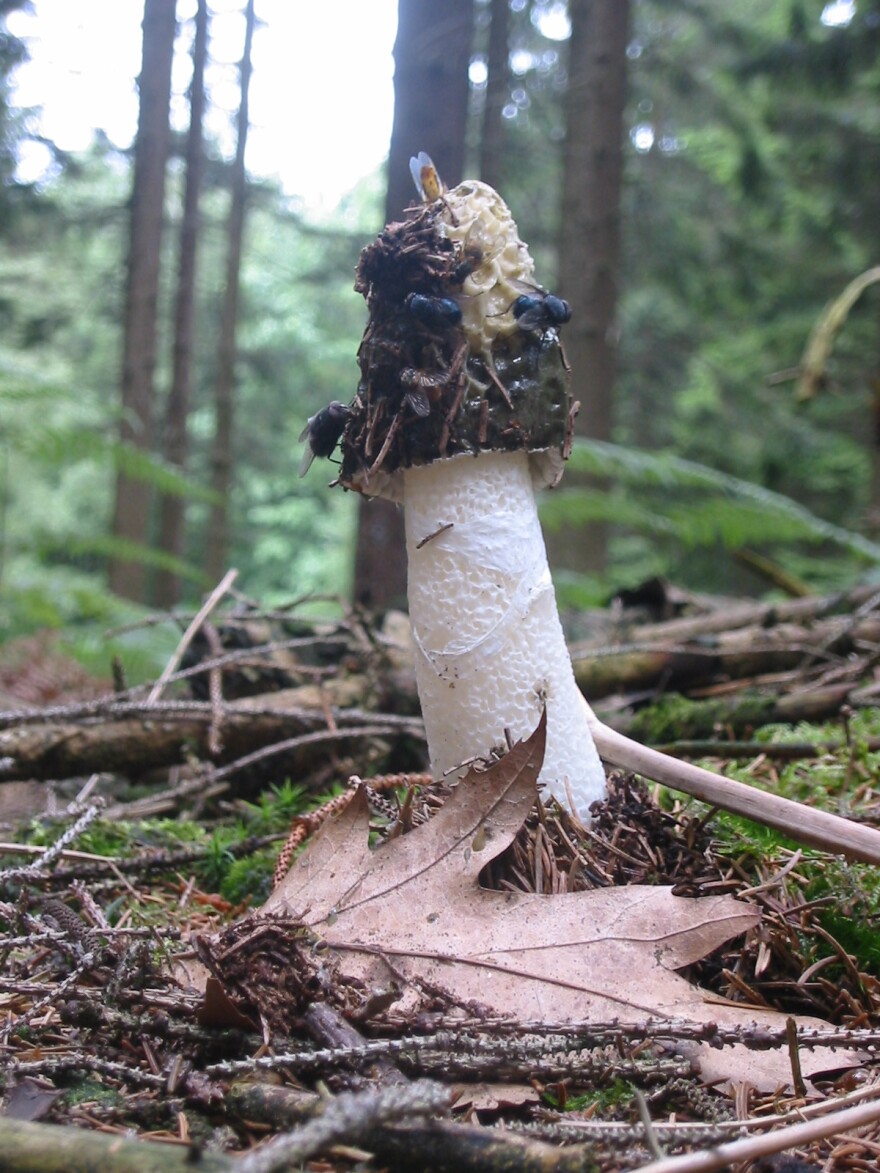"Early last fall, I was walking with my dog in the late evening. As we approached a tall silver maple, Benally pulled the leash taut in a fit of canine curiosity. I looked down to find him sniffing through a patch of peculiar-shaped mushrooms that were growing above the maple's roots.
I nudged my dog aside to take a look at one of the mushrooms. It was five or six inches high; its stem was white, porous, and about the thickness of my index finger. The cap was about an inch and a half long and slightly wider than the stem. It was shaped like the top half of an egg, its surface honeycombed and closely fitted to the stem. Although this particular cap was tan-colored, I noticed that many of the others were lightly coated in a greenish-black, viscous slime.
Despite the unappealing slime, I thought that I had happened upon a patch of morels, which are so desirable for their distinctive flavor. Morels are similar in size and are also distinguished by a honeycombed cap. I imagined that since it was very late in the season, the discolored mushrooms were just morels gone bad. Since none of them looked particularly appetizing, I took a couple of samples, hoping that I could identify them as morels and watch for their reappearance next May.
I brought the samples home and set them in my kitchen to await identification. I awoke the next morning to a putrid smell coming from the mushrooms. I'd noticed a pretty strong odor when I'd picked them, but it wasn't until they were confined indoors that I experienced the full extent of their concentrated stench. I flipped through the illustrated pages of my field guide, pausing hopefully on the pictures of morels, then moving along until a familiar, olive-capped, white-stemmed mushroom caught my eye. When I read the name, Common Stinkhorn, I knew I was onto something.
The many species of Stinkhorn share the property of a particularly repulsive odor. In some species, the reek is like rotten meat, leading people to believe that they've run across a carcass. But this fetid odor does serve a purpose.
While the plant kingdom busies itself with the task of reproduction by tucking its seeds into seductive fruits or clinging burrs, the fungi kingdom has also evolved many answers to the question of how to continue. Although it doesn't have gills, like grocery store mushrooms, the Stinkhorn has adapted an effective means of reproduction. The honeycombed surface on the top of the mushroom bears the Stinkhorn's spores. Before the mushroom reaches its full height, this pitted surface is coated with a thick, strongly-scented liquid. The stench holds a certain allure for flies, who upon landing on the Stinkhorn pick up a bit of the spore-bearing slime and transport the spores to their next destination. That is, unless a naive mycologist with a bad sense of smell confuses it for a morel and brings it home."
(Broadcast: "Fieldnotes," 5/10/15 and 5/15/15. Listen weekly on the radio, Sundays at 12:55 p.m., Tuesdays at 4:54 p.m., or Fridays at 4:54 p.m., or via podcast.)

